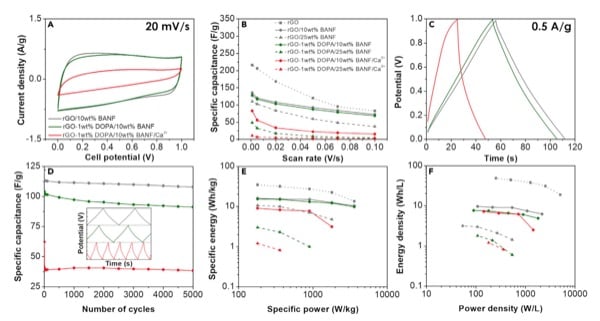One of the major problems facing electric vehicles (EVs) right now is bulk and weight. This is because EVs must carry their batteries in order to run, and EVs require a lot of battery power. Batteries are very dense and heavy components, and this can put a dampener on EV performance, making them less efficient.
Many different methods and approaches to solving this problem have been theorized and tested. One approach is to incorporate energy storage into an EV’s structure itself, distributing battery mass all over the vehicle which will eliminate the need for a single large battery altogether.
However, when you consider that materials used in energy storage and release tend to be brittle and fragile, there are obvious flaws and safety considerations.
Now, a team led by Texas A&M University chemical engineer Jodie Lutkenhaus claims to have discovered a new way to solve this problem—using graphene oxide that has been bonded to dopamine to form the electrodes for a new supercapacitor.

Diagrams displaying the mechanical performance of the structural electrodes. Image Credit: Texas A&M University.
Using Electrodes to Increase Efficiency
Dr Lutkenhaus of the Artie McFerrin Department of Chemical Engineering believes that lighter EVs and aircraft can be achieved by storing energy within structural body panels.
However, this approach faced the challenge mentioned previously, the fact that these panels would be inherently brittle unless supercapacitors with the same sort of mechanical properties as structural body panels can be developed, and that’s exactly what the Texas A&M team did.
In an article published in Matter, the Texas A&M team outlined their process for creating new supercapacitor electrodes with improved mechanical properties. The team managed to create very strong and stiff electrodes based on dopamine chemically bonded to graphene and Kevlar nanofibers.
This is because dopamine is a highly adhesive molecule that mimics the proteins that enable shellfish to stick to virtually any surface. Here, the use of dopamine and calcium ions leads to a major improvement in mechanical strength and performance while also retaining energy storage performance.
Electrodes with the Highest Multifunctional Efficiency
The Texas A&M researchers described the use of this material to form the electrodes for a supercapacitor. To date, as reported in the above Matter article, these new supercapacitor electrodes claim the highest multifunctional efficiency for graphene-based electrodes.
This leaves plenty of room for further research into a brand-new family of structural electrodes that could lead to lighter electric-powered vehicles and aircraft. Although the work by Texas A&M’s research team focused primarily on supercapacitors, Dr Lutkenhaus has indicated that she hopes to take this research and use it to create new, sturdy, and strong batteries for EVs and electric-powered aircraft.




